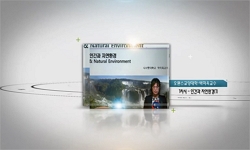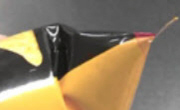본 연구에서는 과거 2년에 걸쳐 강우유출수 처리목적의 인공습지로부터 수집된 수질자료를 바탕으로 지금까지 국외에서 개발된 다양한 형태의 영양소 모델의 적용성을 평가하였다. 검토결...
http://chineseinput.net/에서 pinyin(병음)방식으로 중국어를 변환할 수 있습니다.
변환된 중국어를 복사하여 사용하시면 됩니다.
- 中文 을 입력하시려면 zhongwen을 입력하시고 space를누르시면됩니다.
- 北京 을 입력하시려면 beijing을 입력하시고 space를 누르시면 됩니다.
https://www.riss.kr/link?id=A103021209
- 저자
- 발행기관
- 학술지명
- 권호사항
-
발행연도
2017
-
작성언어
Korean
-
주제어
강우유출수 ; 인 ; 인공습지 ; 질소 ; 질산화 ; 탈질 ; Nitrogen ; denitrification ; nitrification ; phosphorus ; stormwater ; wetland
-
등재정보
KCI등재
-
자료형태
학술저널
-
수록면
90-102(13쪽)
-
KCI 피인용횟수
0
- DOI식별코드
- 제공처
-
0
상세조회 -
0
다운로드
부가정보
국문 초록 (Abstract)
본 연구에서는 과거 2년에 걸쳐 강우유출수 처리목적의 인공습지로부터 수집된 수질자료를 바탕으로 지금까지 국외에서 개발된 다양한 형태의 영양소 모델의 적용성을 평가하였다. 검토결과 질소제거에 가장 큰 영향을 미치는 요인은 수온과 수리학적 부하율(HLR) 이었는데 습지의 수표면적이 습지의 용량에 비해 더 중요하게 작용했음을 시사해주고 있다. 질소제거는 미국 WEF(water environment federation)가 개발한 준경험적인 형태의 모델이 적합한 것으로 밝혀졌다. 한편 인 제거 모델은 수온과 제거속도상수의 관계를 Power Model로 보고 모의했을 때 실측치와 가장 가깝게 계산치를 산출할 수 있었으며 실측치의 증가와 감소경향을 비교적 정확하게 모의할 수 있었다(R2 = 0.79). 그러나 모든 시도에서 수온이 특정온도 이하로 감소했을 때 가장 심한 오차를 발생하여 취약한 예측성능을 보였다. 한편 인공습지에서 질소제거특성을 검토한 결과 질산화에 비하여 탈질이 저조한 것으로 나타났는데 그 이유는 탄소원의 부족과 높은 용존산소 농도로 인하여 Anoxic 조건의 미형성 때문으로 분석되었다. 질소제거 향상방안으로 용존산소의 제어와 탄소원의 확보차원에서 햇빛에 노출된 개방수역과 햇빛에 노출된 식생구역, 그리고 습지의 기능적 측면을 고려한 구성요소의 배분 및 부유 수생식물 및 무기성 여재를 이용하는 방안을 논의하였다.
다국어 초록 (Multilingual Abstract)
In this study, various types of nutrient models were tested by using two tears's water quality data collected from the stormwater wetland in Korea. Based on results, most important factor influencing nitrogen removal was hydraulic loading rate, which ...
In this study, various types of nutrient models were tested by using two tears's water quality data collected from the stormwater wetland in Korea. Based on results, most important factor influencing nitrogen removal was hydraulic loading rate, which indicates that surface area of wetland is more important than its volumetric capacity, and model proposed by WEF was found to give a least error between measured and calculated values. For the phosphorus, in case assuming a power relationship between rate constant and temperature, the best prediction result were obtained, but temperature was most sensitive parameter affecting phosphorus removal. In addition, denitrification was always a limiting step for the nitrogen removal in this particular wetland mostly due to the lack of carbon source and high dissolved oxygen concentration. In this paper, several alternatives to improve nitrogen removal, including proper arrangement and designation of wetland elements and use of floating plants or synthetic fiber mat to control oxygen level and to capture the algal particles were proposed and discussed.
목차 (Table of Contents)
- 요약
- Abstract
- 1. 서론
- 2. 연구방법 및 재료
- 2.1 연구대상 인공습지
- 요약
- Abstract
- 1. 서론
- 2. 연구방법 및 재료
- 2.1 연구대상 인공습지
- 2.2 시료채취
- 2.3 수질분석
- 2.4 모니터링 요약
- 3. 결과 및 고찰
- 3.1 정읍습지에서 주요 영양소의 제거모델
- 3.2 정읍습지에서 질소제거 향상방안
- 사사
- References
참고문헌 (Reference)
1 최명재, "팔당호 인공 수초재배섬에서 수생식물의 생장 및 영양염류 제거 효율" 한국물환경학회 23 (23): 348-355, 2007
2 김영철, "자연현상을 이용한 질산화-탈질공정에 의한 하수처리장 유출수의 질소제거" 대한환경공학회 27 (27): 323-329, 2005
3 김영철, "고속 산화지와 인공습지 수생 처리 시스템에 의한 2차 처리수의 영양소 처리에 관한 연구" 한국물환경학회 19 (19): 543-554, 2003
4 Water Pollution Control Federation (WPCF), "Wetland system, Natural System for Wastewater Treatment, Manual of Practice FD-16, Chapter 9"
5 Tchobanoglous, "Wastewater engineering:treatment, disposal, and reuse" McGraw-Hill 1991
6 United Nations Environment Programme (UNEP), "Waste Stabilization Ponds and Constructed Wetlands:Design Manual, 92-807-2538-6"
7 Kadlec, R.H., "Treatment Wetlands" CRC Press Taylor & Francis Group 1996
8 Interstate Technology & Regulatory Council (ITRC), "Technical and Regulatory Guidance Document for Constructed Treatment Wetlands"
9 American Public Health Association (APHA), "Standard methods for the examination of water and wastewater"
10 Kim Y., "Roles of water hyacinths and their roots for reducing algal concentration in the effluent from waste stabilization ponds" 34 (34): 3285-3294, 2000
1 최명재, "팔당호 인공 수초재배섬에서 수생식물의 생장 및 영양염류 제거 효율" 한국물환경학회 23 (23): 348-355, 2007
2 김영철, "자연현상을 이용한 질산화-탈질공정에 의한 하수처리장 유출수의 질소제거" 대한환경공학회 27 (27): 323-329, 2005
3 김영철, "고속 산화지와 인공습지 수생 처리 시스템에 의한 2차 처리수의 영양소 처리에 관한 연구" 한국물환경학회 19 (19): 543-554, 2003
4 Water Pollution Control Federation (WPCF), "Wetland system, Natural System for Wastewater Treatment, Manual of Practice FD-16, Chapter 9"
5 Tchobanoglous, "Wastewater engineering:treatment, disposal, and reuse" McGraw-Hill 1991
6 United Nations Environment Programme (UNEP), "Waste Stabilization Ponds and Constructed Wetlands:Design Manual, 92-807-2538-6"
7 Kadlec, R.H., "Treatment Wetlands" CRC Press Taylor & Francis Group 1996
8 Interstate Technology & Regulatory Council (ITRC), "Technical and Regulatory Guidance Document for Constructed Treatment Wetlands"
9 American Public Health Association (APHA), "Standard methods for the examination of water and wastewater"
10 Kim Y., "Roles of water hyacinths and their roots for reducing algal concentration in the effluent from waste stabilization ponds" 34 (34): 3285-3294, 2000
11 Halberson, N. V., "Review of constructed Subsurface Flow vs. Surface Flow Wetlands" Savannah River Site 2004
12 Heidi B. Guerra, "Oxygen Mass Balance Analysis in an Intermittently Aerated Wetland Receiving Stormwater from Livestock Farms" 한국습지학회 18 (18): 488-498, 2016
13 Reed S. C., "Natural Systems for Waste Management and Treatment" McGraw-Hill 1995
14 EPA(U. S. Environmental Protection Agency)., "National Conference on Urban Runoff Management: Enhancing Urban Watershed Management at the Local, County, and State Levels"
15 Kim Y., "Guidelines for Nonpoint Source PollutionManagement in Agricultural Area" Korea Rural Community Corporation 2007
16 Kim Y., "Evaluation of the Nitrogen Reduction in Water Hycinth Ponds Coupled with Waste Stabilization Ponds" 23 (23): 425-436, 2003
17 Ministry of Environment (MOE), "Design and Maintenance Guielines of the Stormwater BMPs" 2016
18 Boyd N., "Constructed Wetlands for the Treatment of Agricultural Wastewater in Atlantic Canada" Atlantic committee on land and engineering 2005
19 Ministry of Environment (MOE), "Certified Analytical Methods of Water Quality"
동일학술지(권/호) 다른 논문
-
Status of Constructed Wetlands in Nepal : Recent Developments and Future Concerns
- 한국습지학회
- Sher Bahadur Gurung
- 2017
- KCI등재
-
VIC 모형을 이용하여 모의된 한반도 토양수분 자료의 분석 및 검증
- 한국습지학회
- 조은샘
- 2017
- KCI등재
-
유리 섬유와 뒤틀림 방지 밴드를 이용한 하수관거의 강도 및 뒤틀림 개선 방안 연구
- 한국습지학회
- 홍석인
- 2017
- KCI등재
-
봉화군 마을하수도 및 하수처리장의 오염물질 처리 효율 분석
- 한국습지학회
- 박민수
- 2017
- KCI등재
분석정보
인용정보 인용지수 설명보기
학술지 이력
| 연월일 | 이력구분 | 이력상세 | 등재구분 |
|---|---|---|---|
| 2026 | 평가예정 | 재인증평가 신청대상 (재인증) | |
| 2020-01-01 | 평가 | 등재학술지 유지 (재인증) |  |
| 2017-01-01 | 평가 | 등재학술지 유지 (계속평가) |  |
| 2013-01-01 | 평가 | 등재 1차 FAIL (등재유지) |  |
| 2011-07-29 | 학술지명변경 | 외국어명 : Journal of Korean Wetlands Society journal -> Journal of Wetlands Researh |  |
| 2011-07-12 | 학술지명변경 | 외국어명 : Journal of Korean Wetlands Society -> Journal of Korean Wetlands Society journal |  |
| 2010-01-01 | 평가 | 등재학술지 선정 (등재후보2차) |  |
| 2009-01-01 | 평가 | 등재후보 1차 PASS (등재후보1차) |  |
| 2007-01-01 | 평가 | 등재후보학술지 선정 (신규평가) |  |
학술지 인용정보
| 기준연도 | WOS-KCI 통합IF(2년) | KCIF(2년) | KCIF(3년) |
|---|---|---|---|
| 2016 | 0.38 | 0.38 | 0.39 |
| KCIF(4년) | KCIF(5년) | 중심성지수(3년) | 즉시성지수 |
| 0.39 | 0.42 | 0.52 | 0.16 |





 ScienceON
ScienceON 스콜라
스콜라






